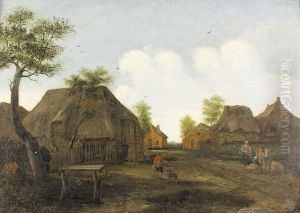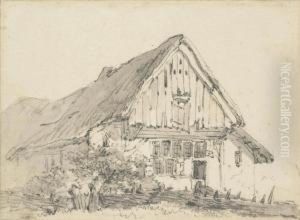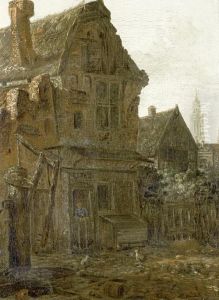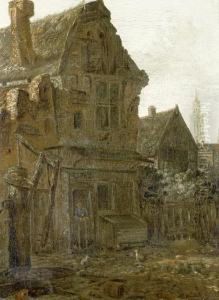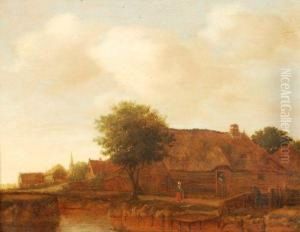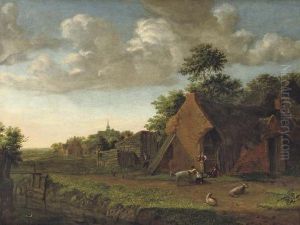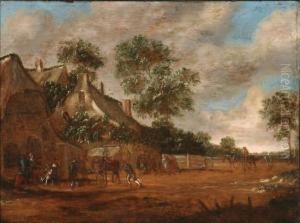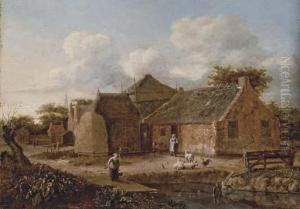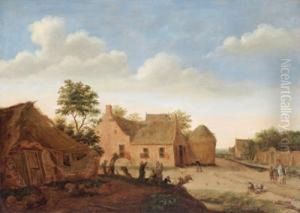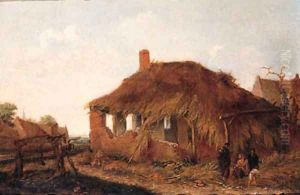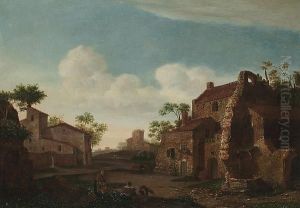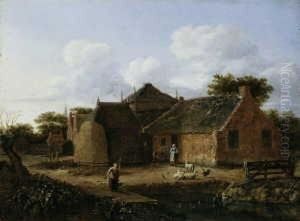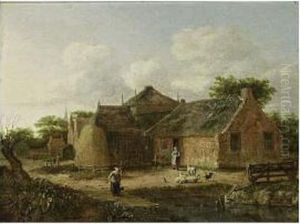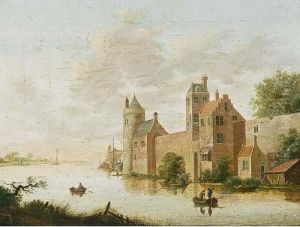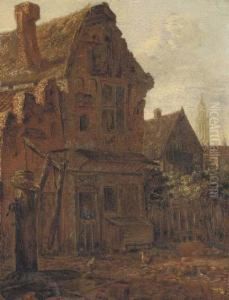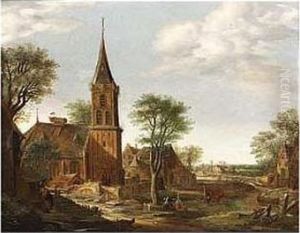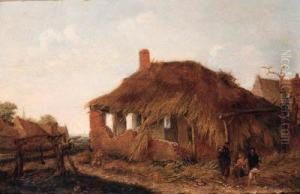Emmanuel Murant Paintings
Emmanuel Murant was a Dutch Golden Age painter known for his captivating landscapes and barn scenes, reflecting the serene and pastoral life of the Netherlands in the 17th century. Born in 1622 in Amsterdam, Murant was part of a period in Dutch art that is celebrated for its detailed observation of nature and the everyday life of its people. His works are characterized by their meticulous attention to detail, the play of light and shadow, and the tranquil moods they evoke.
Murant's early life and training are not well-documented, but it is believed that he was influenced by the works of Paulus Potter and Karel Dujardin, artists known for their realistic landscapes and animal paintings. There is speculation that he may have studied under one of them or at least was significantly influenced by their style and subject matter.
In his career, Murant traveled to France, where he spent some time working and studying. This experience enriched his palette and introduced a broader perspective into his work, which is evident in the slightly more animated compositions and the subtle use of light in his later pieces. However, the majority of his artistic life was spent in the Netherlands, where he returned to continue his work and where he eventually died in 1700.
Murant's paintings often depict quiet, rural scenes, barn interiors, and farmyards, populated with animals and occasionally figures, engaged in mundane tasks. These scenes are executed with a high degree of realism, inviting the viewer into a peaceful, idyllic world. His ability to render textures, from the roughness of wooden barn walls to the softness of animal fur, demonstrates his keen observation and technical skill.
Despite the beauty and skill evident in his work, Emmanuel Murant is not as well-remembered as some of his contemporaries. However, his contributions to Dutch landscape painting continue to be appreciated by art historians and collectors. His works are held in several museums and collections worldwide, where they continue to be studied and admired for their quiet beauty and technical precision.
Murant's death in 1700 marked the end of an era of Dutch painting that celebrated the beauty of the Dutch countryside and its way of life. His works remain a testament to the Golden Age of Dutch painting, showcasing the skill, precision, and love for the natural world that characterized this period in art history.
